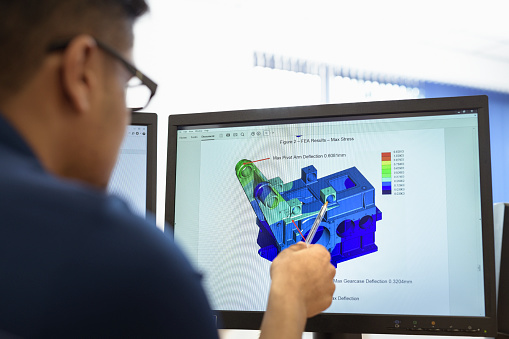Glossar
Finite element


What are Finite Elements?
Finite elements are the fundamental building blocks of the finite element method (FEM), a numerical method used in engineering and applied mathematics to analyze a wide range of physics problems. Here are some key aspects that describe the nature and function of finite elements:
- Basic Units of Discretization: The finite element method breaks down a physical system or structure into a number of smaller units called "finite elements". This discretization allows for more detailed and accurate analysis of complex structures.
- Shape and size: Finite elements can have different shapes, such as triangles, quadrilaterals, tetrahedrons or hexahedrons. The shape and size of the elements are selected based on the geometry and specific requirements of the object being analyzed.
- Material and property modeling: Each element is characterized by specific material properties that determine the element's behavior under different loads and conditions. These properties include elasticity, density, thermal conductivity and other relevant physical parameters.
- Node points: The corner points of the finite elements are called nodes. These nodes are key points where the elements are connected to each other and where the calculations are carried out to determine, for example, displacements or stresses.
- Local and Global Coordinate System: Each element has its own local coordinate system used to calculate the internal forces and displacements. These local results are then transferred to a global coordinate system to analyze the behavior of the entire structure.
- Element equations and matrices: Equations are created for each element that describe its behavior. These equations are presented in the form of matrices that express the relationship between the forces and displacements at the nodes of the element.
- Integration into the overall system: The results for each element are integrated into a larger system of equations that represents the entire structure or system. The solution of this system provides the desired information about the structure's response to the applied loads.
Through the use of finite elements, complex structures and systems can be broken down into smaller, manageable units, enabling detailed analysis that would often be impractical using traditional analytical methods.

Request a free potential analysis
Discover what added value Meshparts can offer your company in a free potential analysis with one of our experts.

